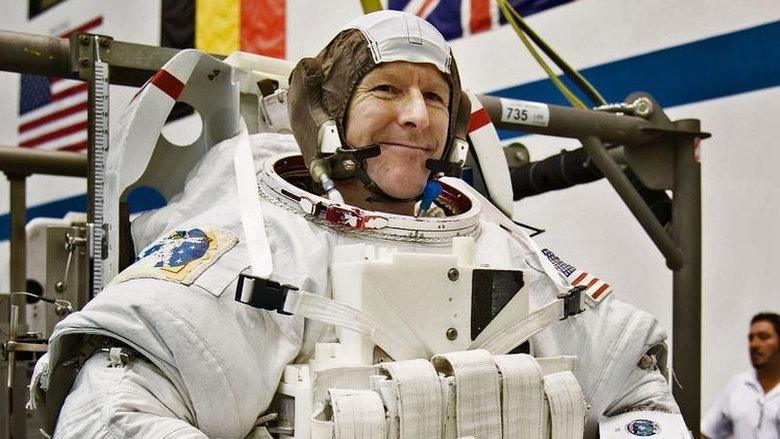10 key moments in space exploration
- Published
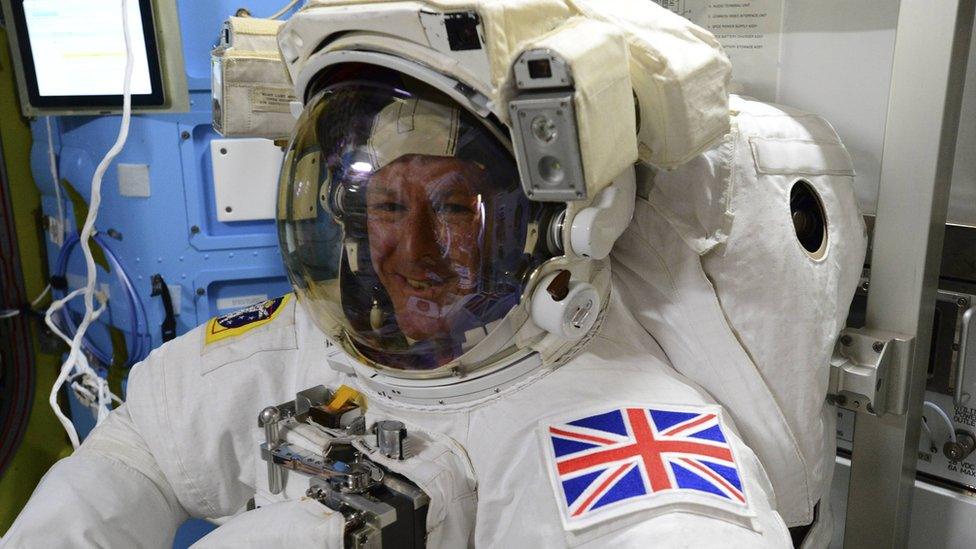
Tim Peake is the first "official" Briton to go into space
Major Tim Peake's repair mission outside the International Space Station is being regarded as a landmark for Britain. BBC News takes a look back at some of the defining moments in the broader history of space exploration.

4 October 1957 - The world's first artificial satellite
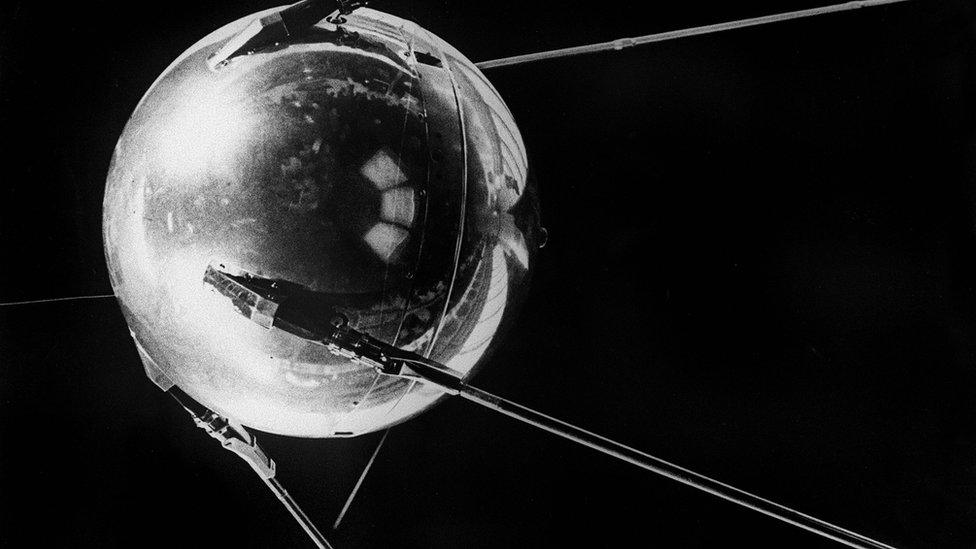
Sputnik 1 was launched by the Soviet Union in a technological race with the US
The Sputnik 1 satellite was launched by the USSR on 4 October 1957. It was the first man-made object to leave the Earth's atmosphere. It weighed 180lb (83.5kg), and was described at the time as a "remarkable achievement.", external

28 May 1959 - First creatures to return alive from space
Two monkeys, Able and Baker, became the first living creatures to survive a space flight. Able, a female rhesus monkey, and Baker, a female squirrel monkey, were launched into space by the US on a Jupiter missile. The monkeys were not the first living creatures to be sent on a mission. In November 1957, the USSR launched Sputnik 2, carrying a dog named Laika on board - she died a few hours into the mission from overheating and panic.
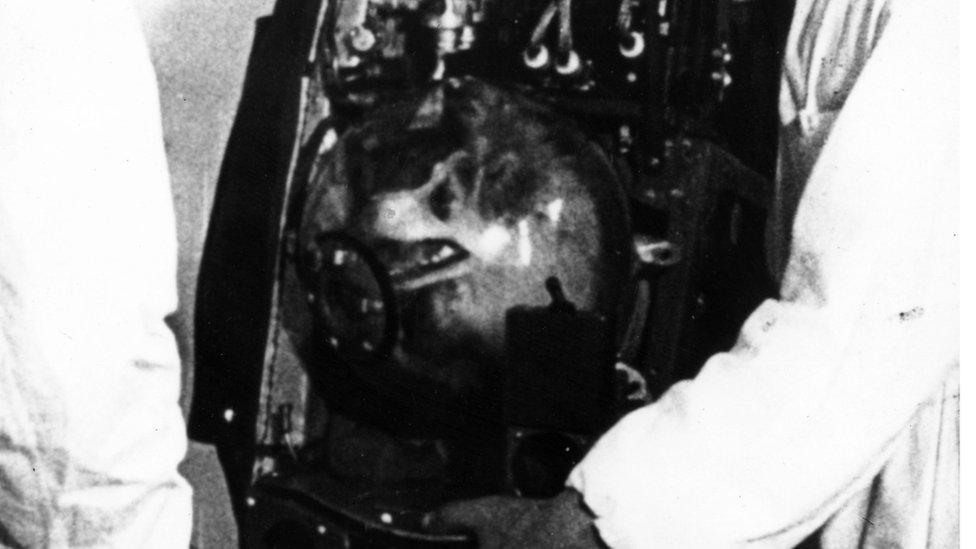
Laika, a stray dog from Moscow, created space history but did not survive her flight

12 April 1961 - The first man in space
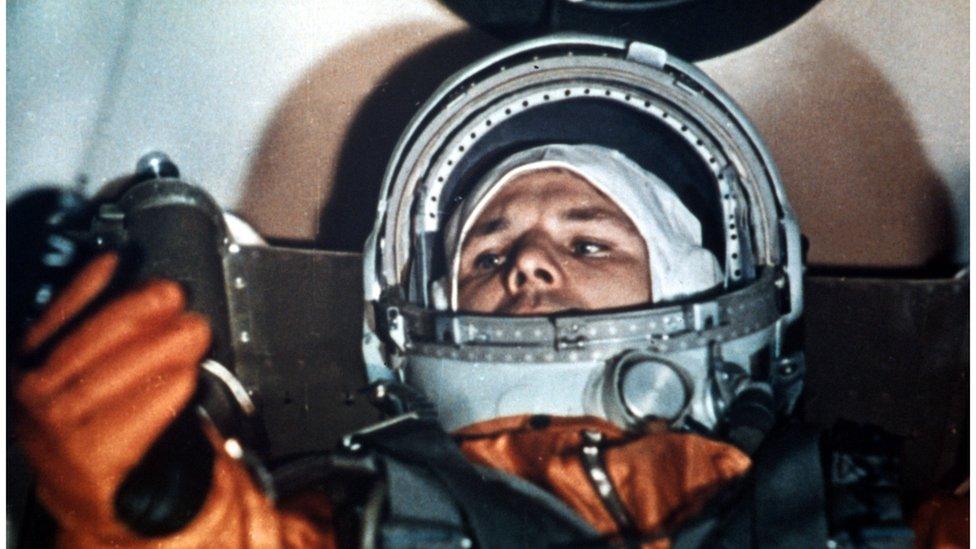
Russian soviet pilot Yuri Gagarin was the first man to blast off into space
The USSR sent Yuri Gagarin into space from Baikonur Cosmodrome, Kazakhstan, in a Vostok spacecraft. He made a single orbit of Earth in 108 minutes, travelling at more than 17,000 miles per hour. The achievement was reported at the time as a blow to the Americans, external who had reportedly hoped to be the first to launch a man beyond Earth's atmosphere. The US launched American citizen Alan Shepard into space less than a month later on 5 May 1961.
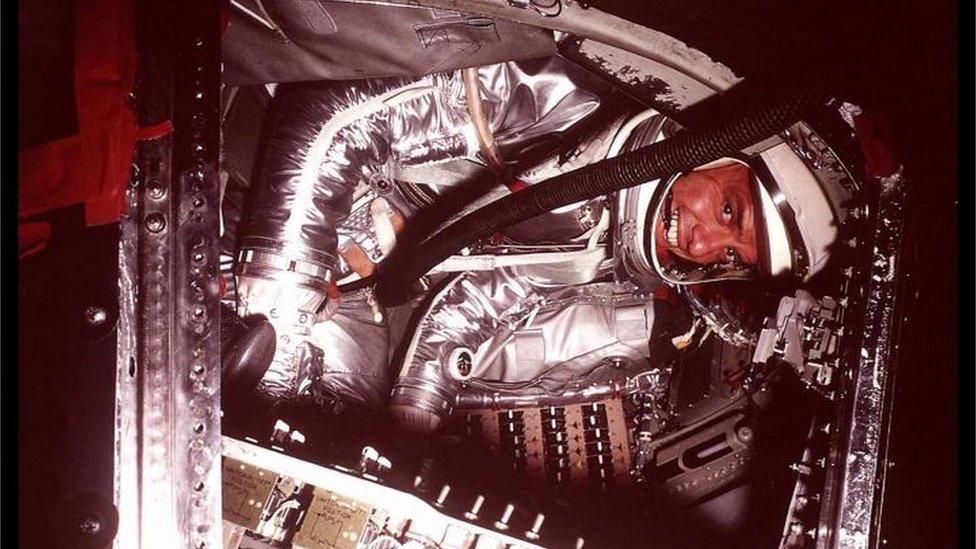
The US responded to the Gagarin mission by launching Alan Shepard less than one month later

16 June 1963 - The first woman in space
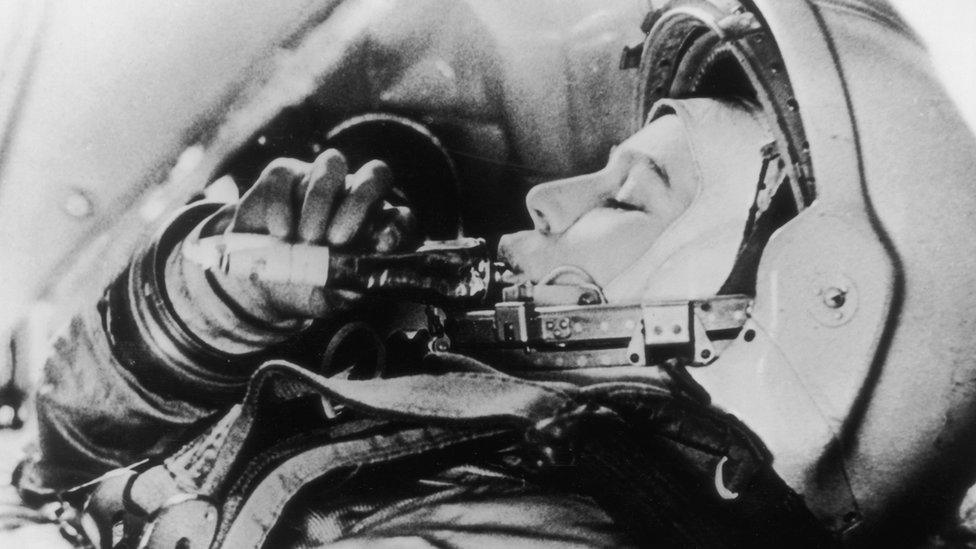
Ex-textile worker Valentina Tereshkova was reportedly injured during her landing
Valentina Tereshkova, a former textile worker, became the first woman to be launched into space by the Soviet Union. She circled the Earth 49 times during three days in space, and was reportedly injured during the landing.

18 March 1965 - First-ever spacewalk
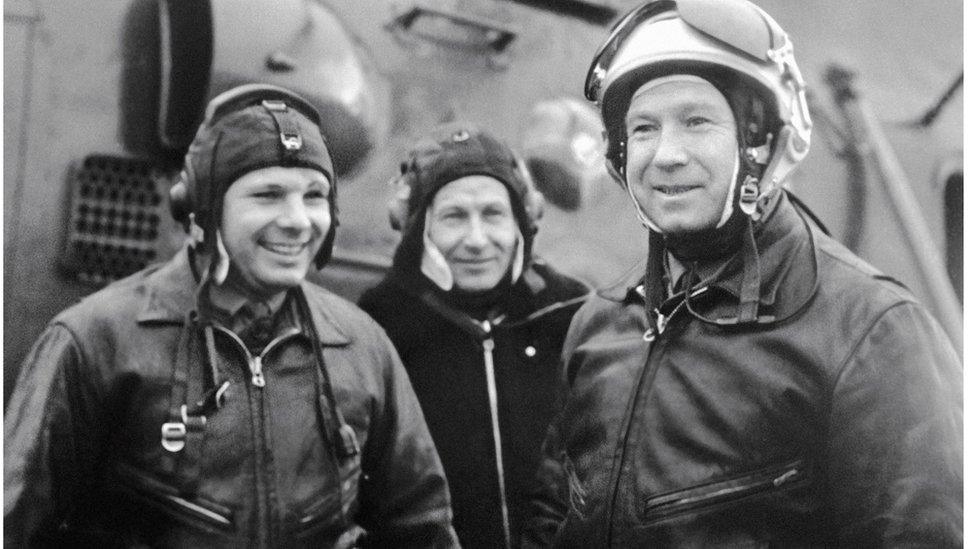
Alexei Leonov (right) carried out the first-ever spacewalk
Russian cosmonaut Alexei Leonov carried out the first-ever spacewalk from the two-man Voskhod spacecraft. Leonov's suit expanded minutes after stepping into space due to the zero-pressure conditions. When he tried to get back into his spaceship, he could not fit through the hatch and had to release a valve to partially depressurise his suit and squeeze back inside.

20 July 1969 - First man on the Moon

Neil Armstrong helped the US win the race to the Moon
American Neil Armstrong became the first man to set foot on the Moon. Armstrong and Edwin "Buzz" Aldrin spent two hours on the lunar surface setting up observation equipment and collecting rock samples. As Armstrong put his left foot down, he famously declared: "That's one small step for man, one giant leap for mankind." He described the surface as being like powdered charcoal and the landing craft left a crater about one foot deep. The mission lasted eight days, three hours, 18 minutes and 35 seconds

19 April 1971 - The first space station is launched
Russia launched Salyut, the first space station. The first crew to dock with the orbiting outpost later die during re-entry when the air leaks out of their Soyuz capsule.

7 February 1984 - 'Free-flying' in space

Bruce McCandless used a jet-propelled backpack to move around
Bruce McCandless became the first person to do a spacewalk without being attached to the spacecraft. He tested a manned manoeuvring unit, which allowed him to travel away from the orbiter, during a 90-minute spacewalk.

20 November 1998 - Assembly of ISS begins
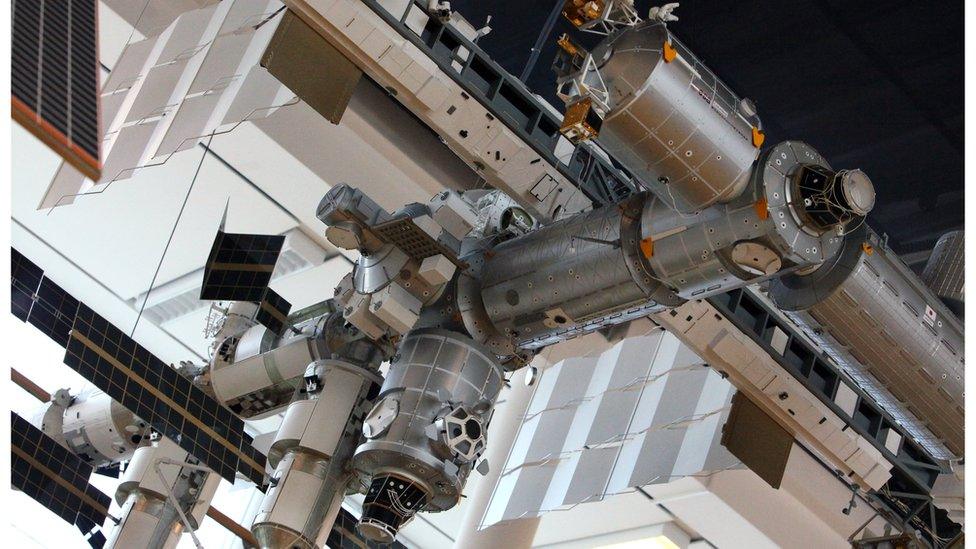
Model of the International Space Station
Assembly of the ISS began with the launch of its first module, Zarya, on a Proton rocket from Baikonur. The ISS is the largest artificial body in space. The station has been continuously occupied since November 2000. In that time, more than 200 people from 15 countries have visited, external.

28 April 2001 - First space tourist

Dennis Tito paid $20m for his trip into space
Dennis Tito, a billionaire businessman from California, became the first paying passenger to go to outer space.
Mr Tito set off from Kazakhstan for an eight-day holiday aboard the International Space Station, and paid $20m (£14m) for his trip.

- Published15 January 2016
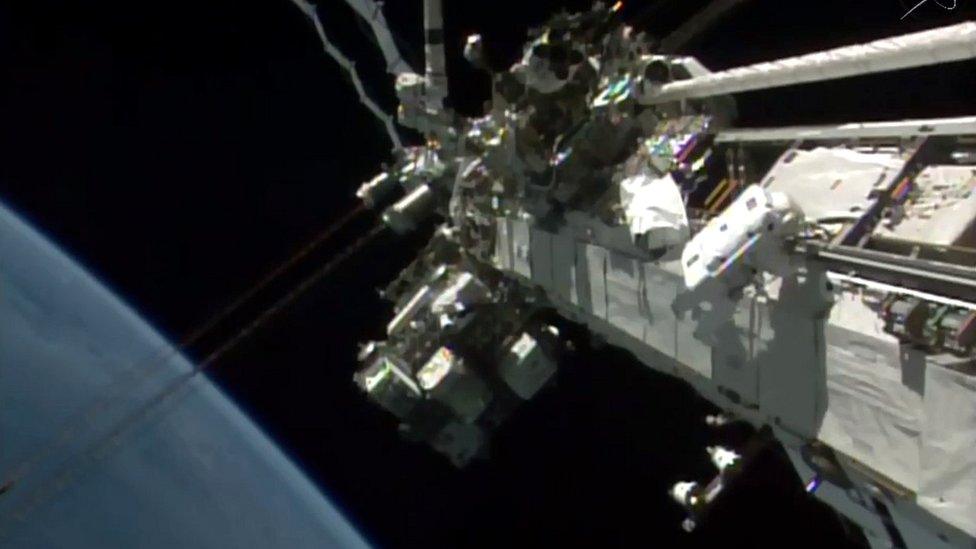
- Published6 January 2016

- Published24 January 2014
